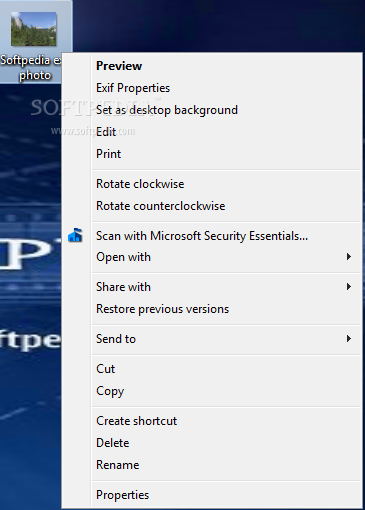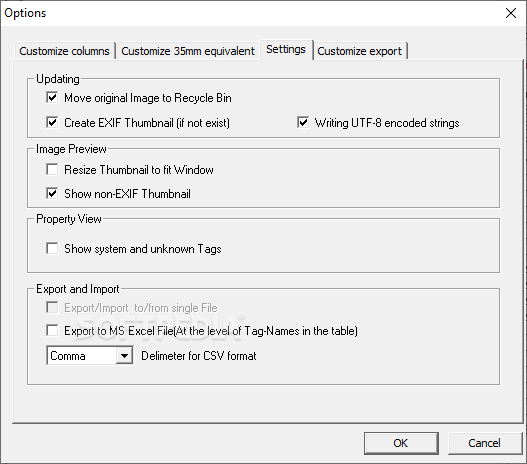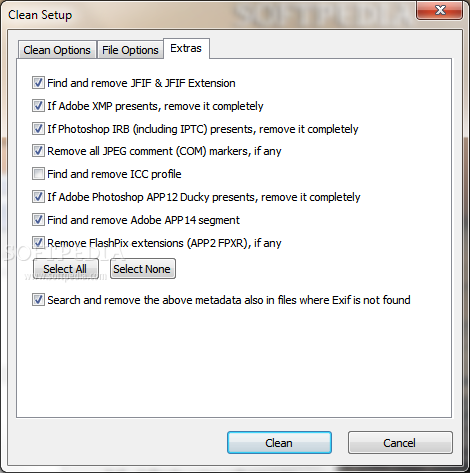

It may have looked ok in Windows 10 or on the phone, but that is because they dynamically rectify the photo. The photo that Paul Kubik uploaded was not normalized.
#ALTERNATIVE TO EXIF PILOT SOFTWARE#
Instead, they flip the Orientation field, and expect display software to do the work. Because cell phones don't have enough processing power, they don't bother to normalize photos. Then it is "normalized" and will display properly anywhere.Ī "Normalized" photo will always display correctly, but a non normalized photo depends on the display software (browser) to fix it according to a new field in exif info called "orientation". I had to rotate it 90 degrees using some other program. The problem is that Paul's photo was written sideways, and then had a note in the Exif data saying it was sideways.

Paul has said that "Bivouac's photo resizing software changed the photo orientation wrongly.". This is because the browser just displays the photo "as is" without doing any trickery regarding the Exif field called "Orientation". It looks OK on your phone or computer, but when you see it in a browser it is sideways. #6598 - 2019.10.16 Robin Tivy - What happens when you upload a photo that is not normalized I would want to also do it even if I don't resize. That is what many programs do, probably what Facebook does according to paul.ĭoug Brown and I have discussed building zero rotation into his DLL, such that it happens whenever a photo is resized. Ideally I could find another third party upload DLL and rewrite the photo uploading scheme in Bivouac such that it does a "true rotation" of the photo upon upload. New programs tend to know about Exif field, and can handle sideways photos, either fixing them themselves, or displaying without fixing them. But then cell phone cameras and Windows 10 started using the Exif scheme, which broke all older programs and software including Bivouac. I'm not sure what the camera did with the Exif "orientation" field, but everybody ignored it.

And then I would need to rotate them 90 degrees to zero them. When you loaded the photos off the camera onto my Windows XP machine, the ones that were taken sideways displayed sideways. Eg: My Pentax Optio camera came with a program called ACDSee. It was up to the photographer to have zeroed it before trying to display it. Initially photo editing programs assumed the photo was already zeroed. The problem is that the whole scheme of using the exif orientation field was hastily invented. Unlike "normalized" it can't be confused with any other concept. Both "zeroed" and zero rotated" are distinct terms when talking about. If you "zero" your photos they will never cause trouble in any program.īut if you don't truly rotate them, and rely on the Exif field, you will eventually hit problems. Such a zero rotated jpg file will display correctly by all photo display programs, both old and new. And the exif orientation field should be zero or not exist. If a photo is zeroed, the first byte in the. Or "zero rotated" meaning requiring zero rotation to display correctly. Or "internal" as in "internally rotated". I guess I could use the word "true" as in "truly rotated". However, I'll try and come up with better terminology. So my defense is that the word "normalize" means different things in different contexts. In reviewing what I had written, I referred to "normalizing the orientation", which I suppose is distinct from "normalizing the pixel intensity". Paul has pointed out that the term "normalization" might be confusing. I then wrote a new document which I would now recommend as the starting point in this discussion. Then I reviewed the whole explanation in January 2017 after working through solving photo orientation problems with Mark Fletcher. In 2016 March, I wrote First Explanation of Photo Orientation Problems. This discussion supplies background theory for understanding and fixing photo orientation problems. Written: 2016.03.13 by: Robin Tivy Type: Reference Photo Orientation Discussion Home Help Index SignUp Login


 0 kommentar(er)
0 kommentar(er)
